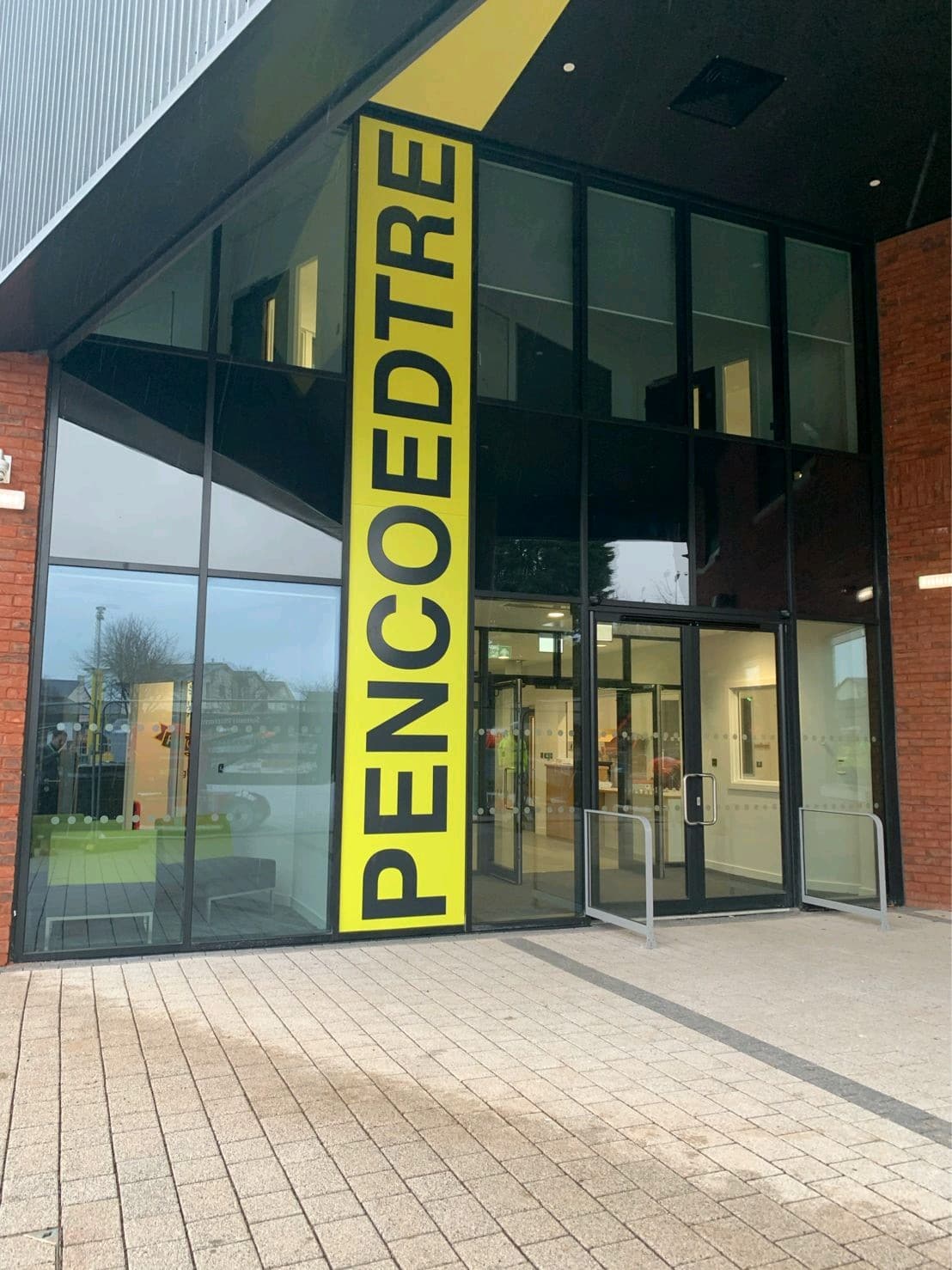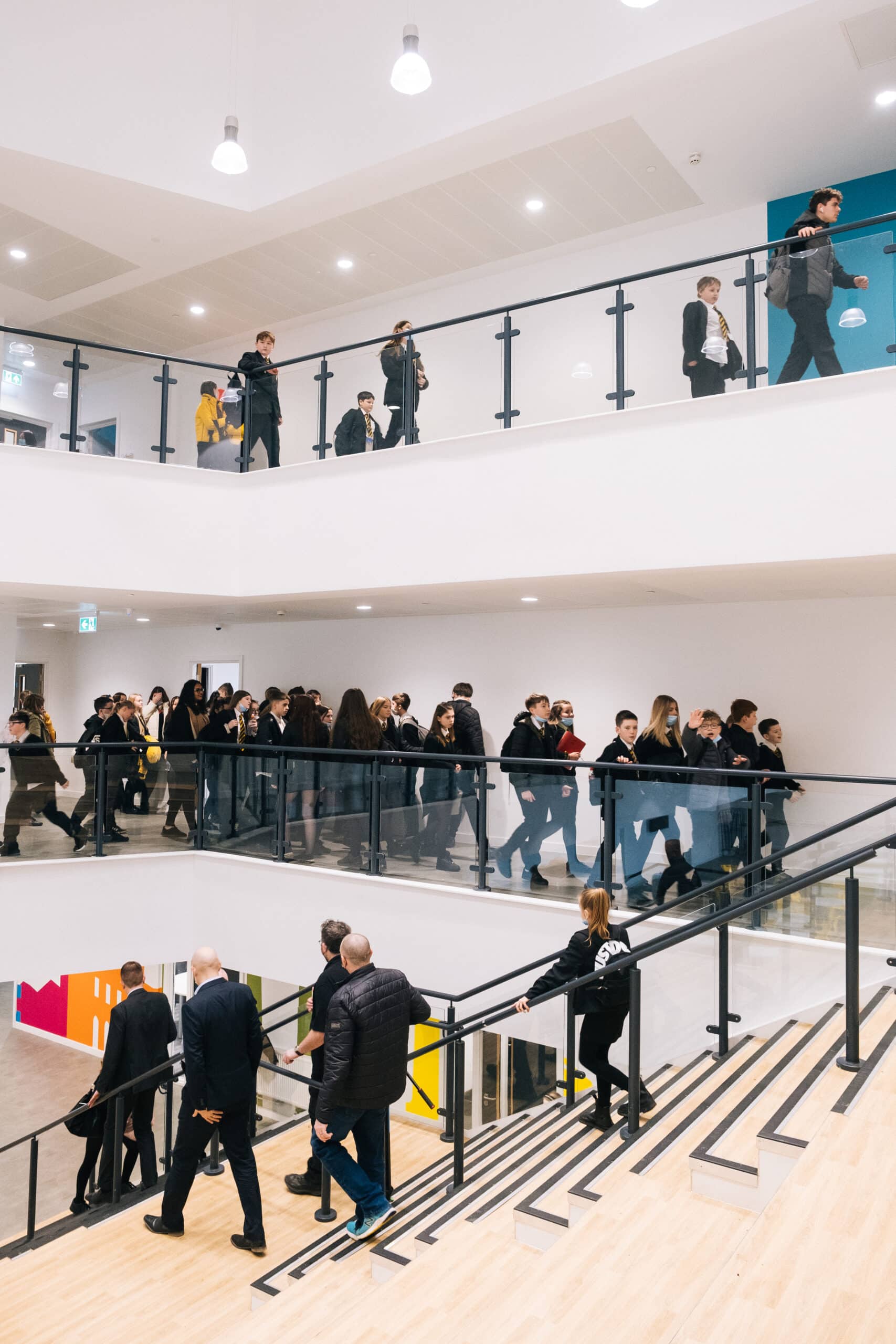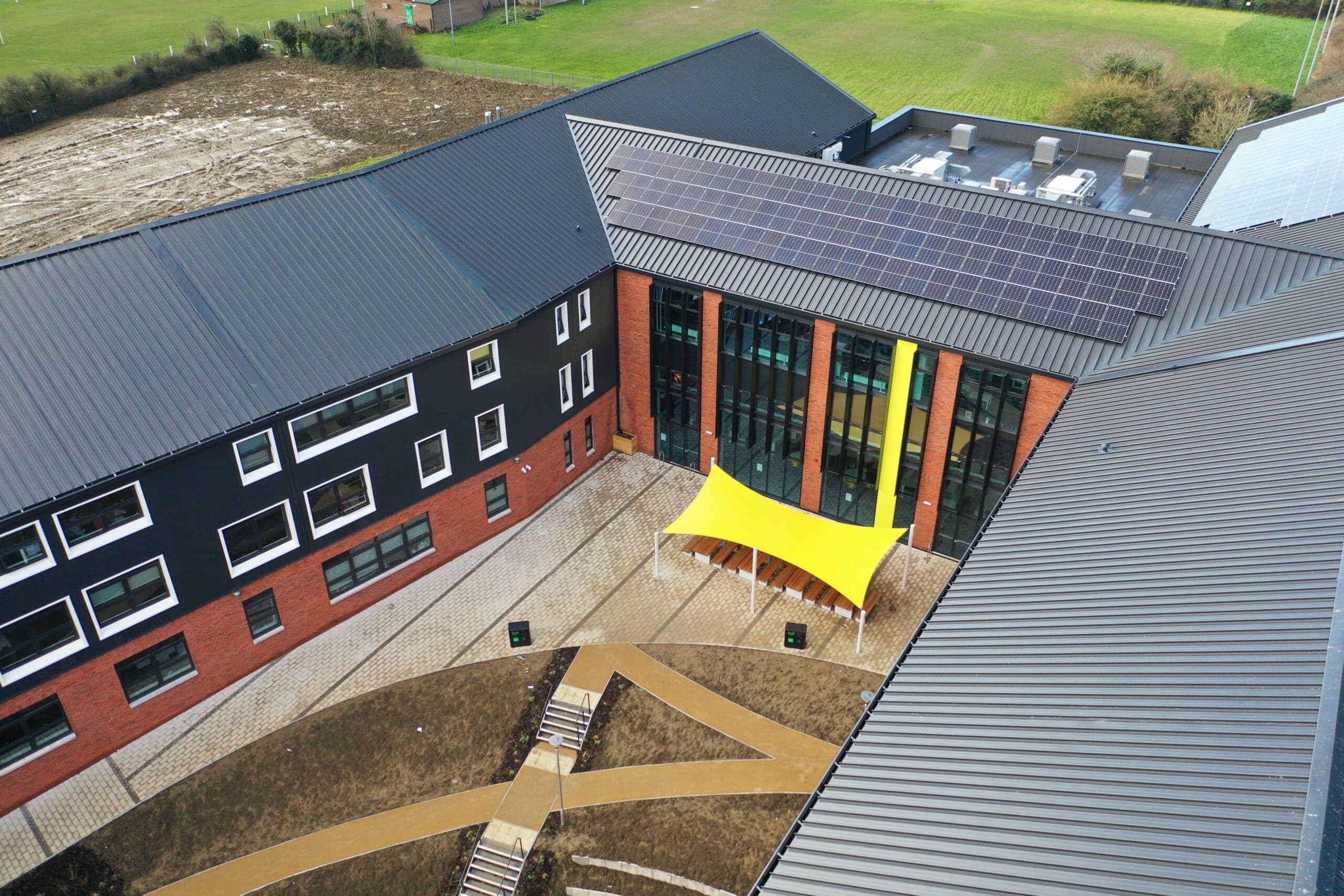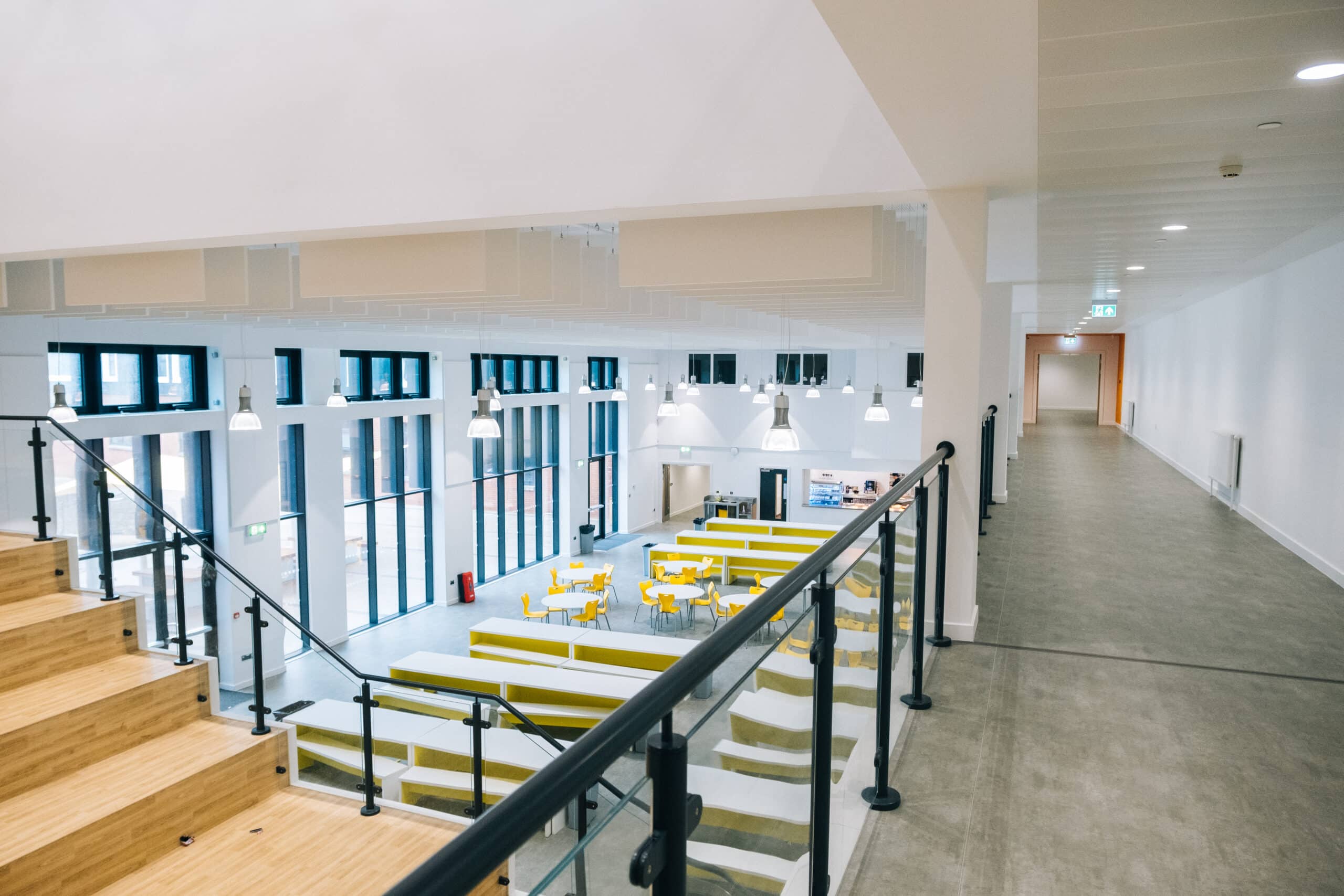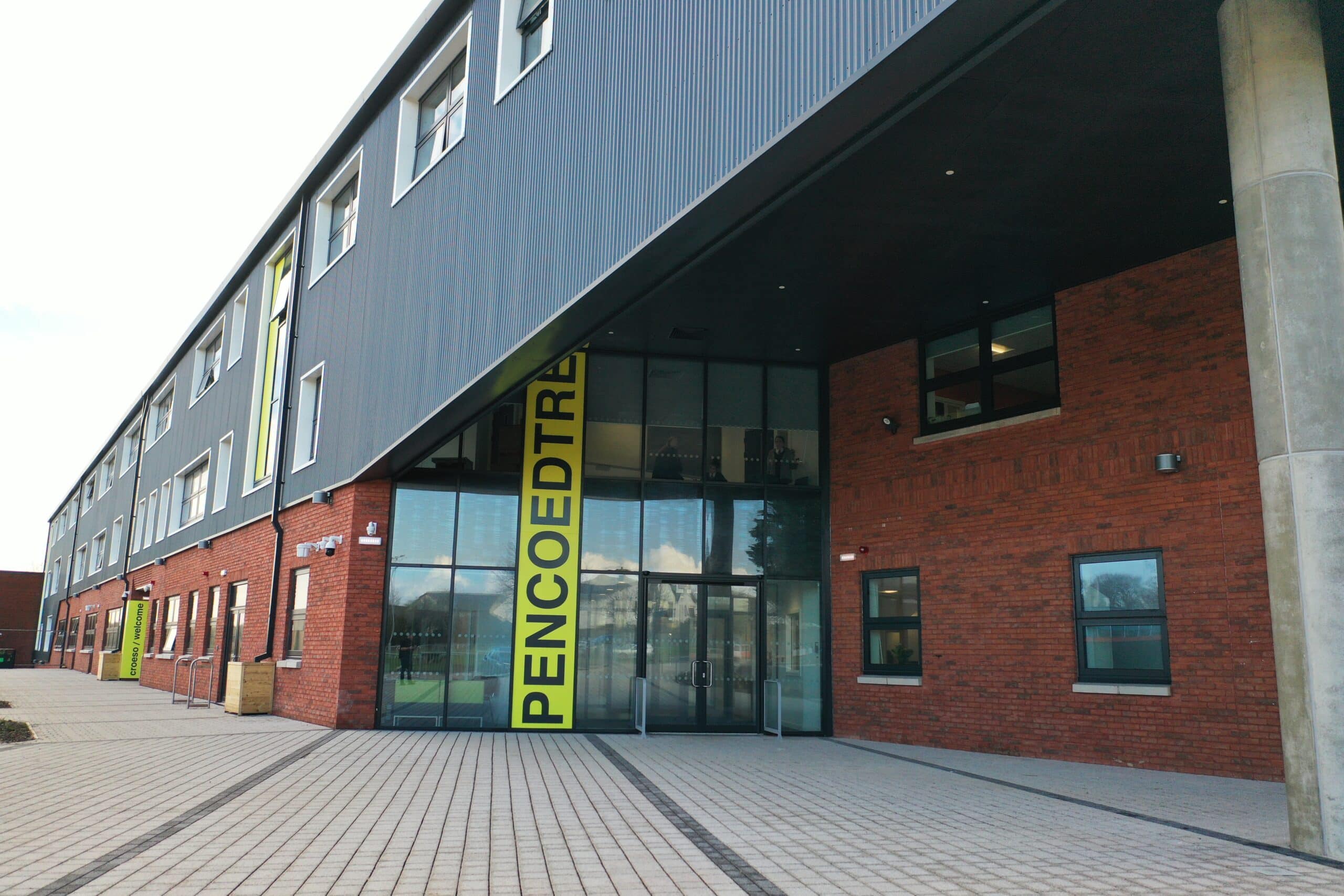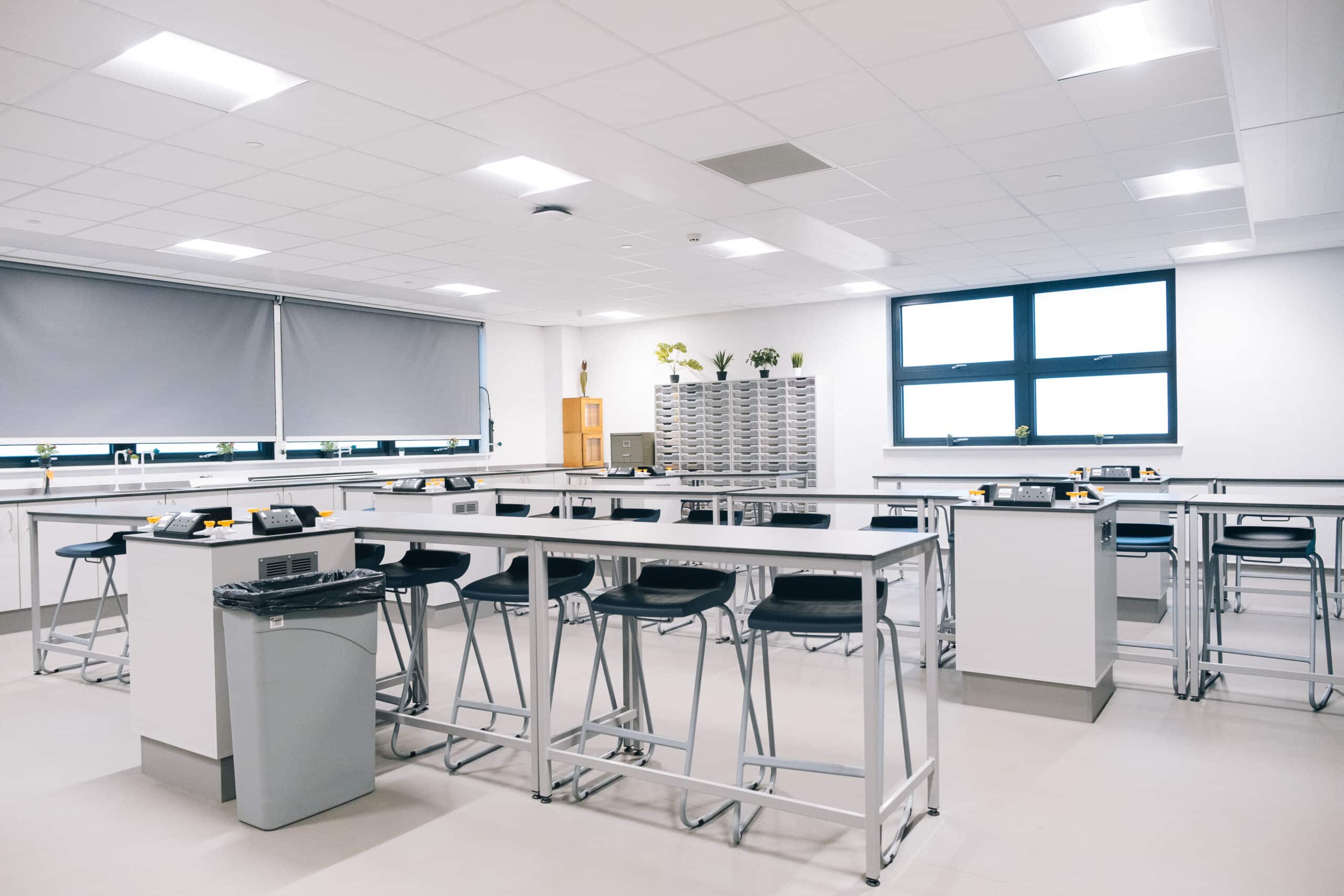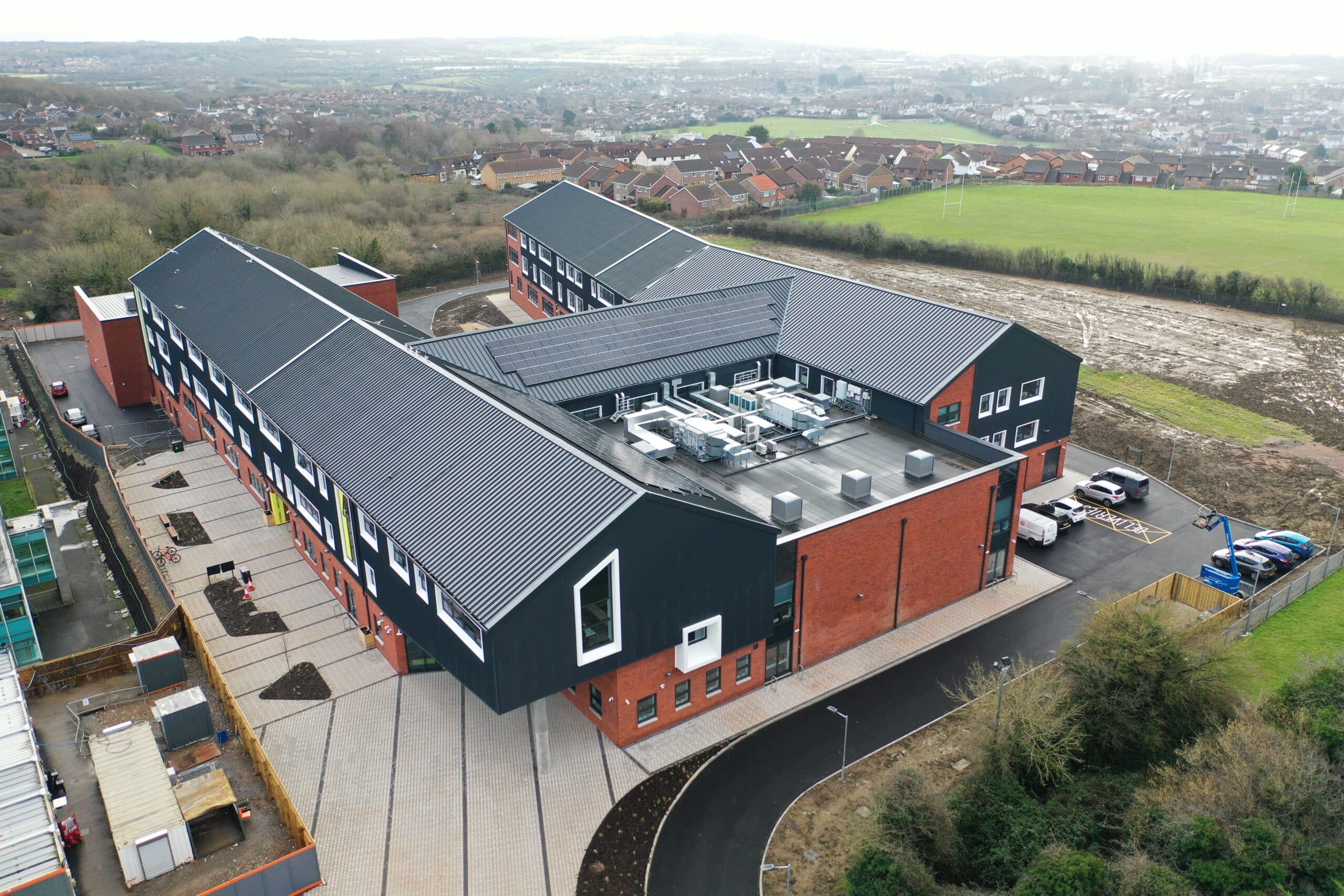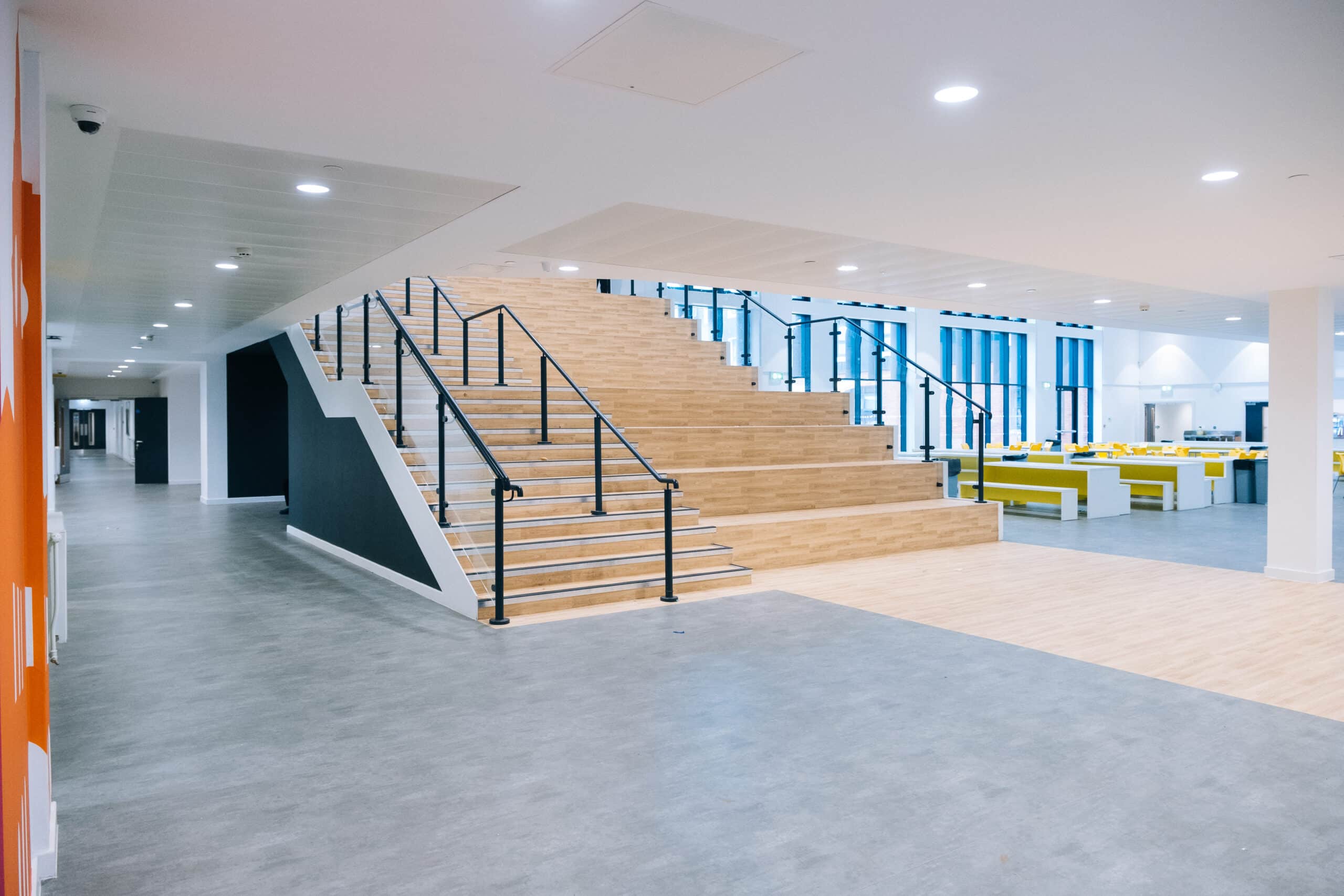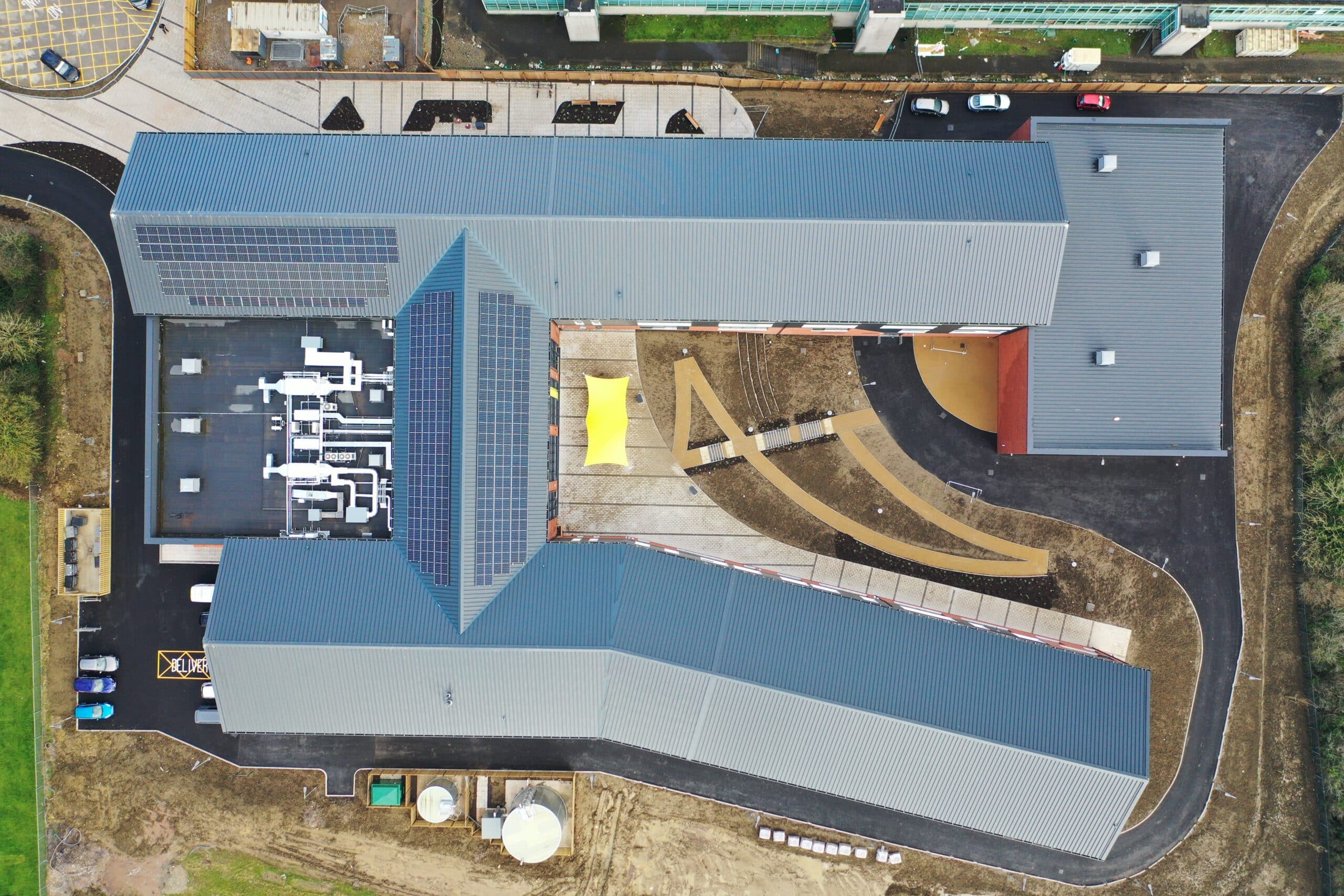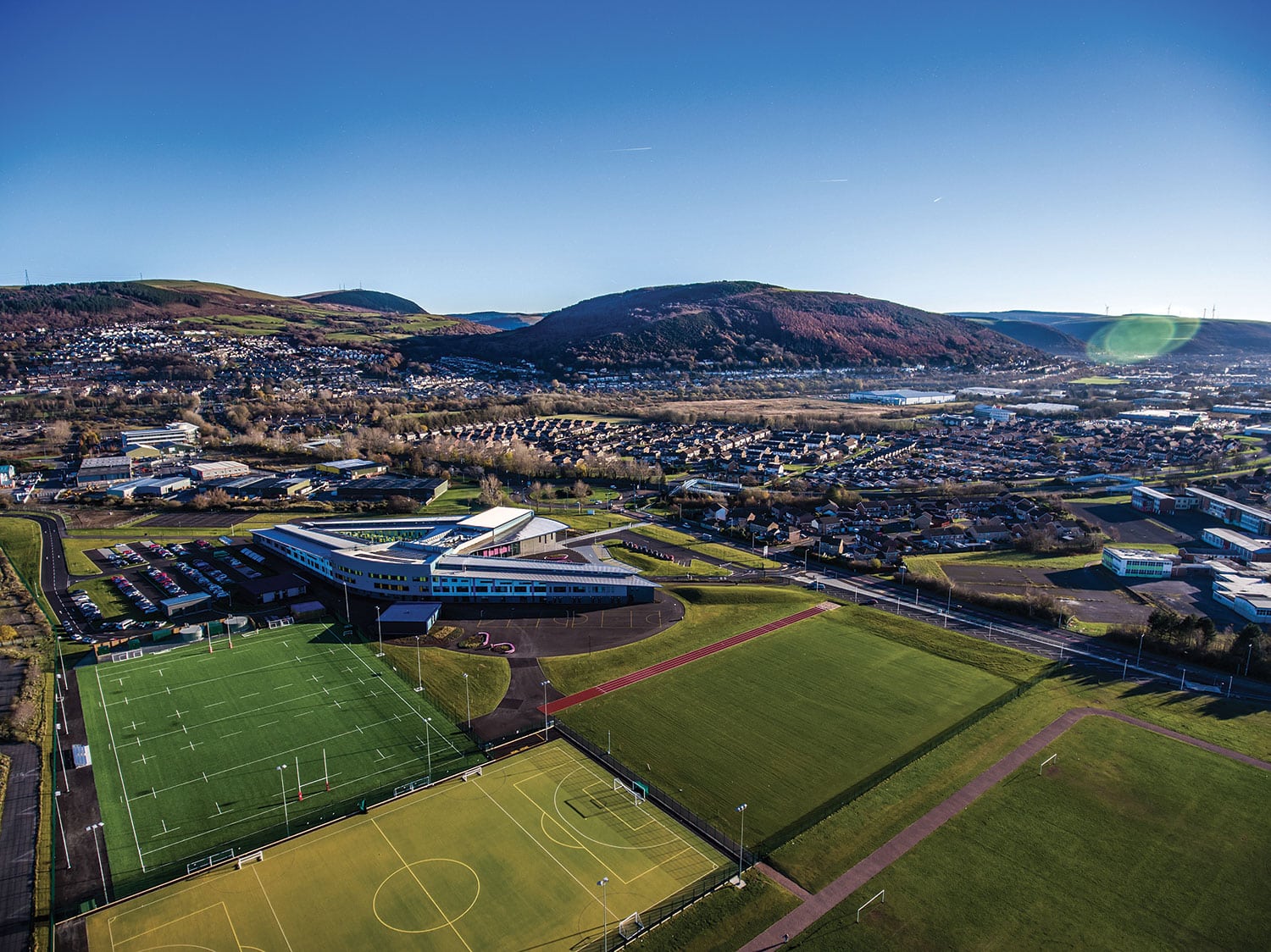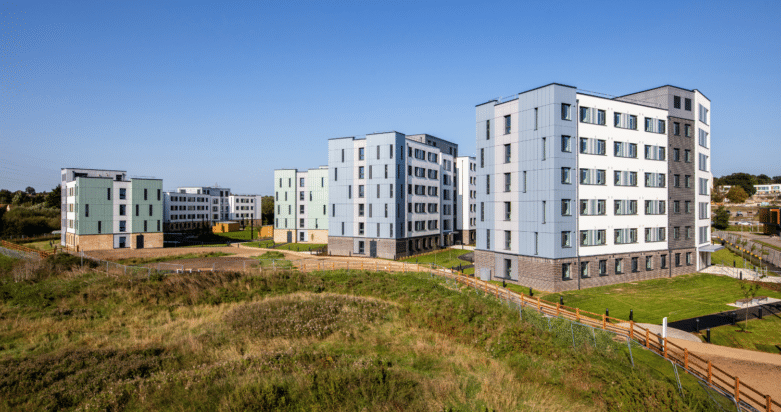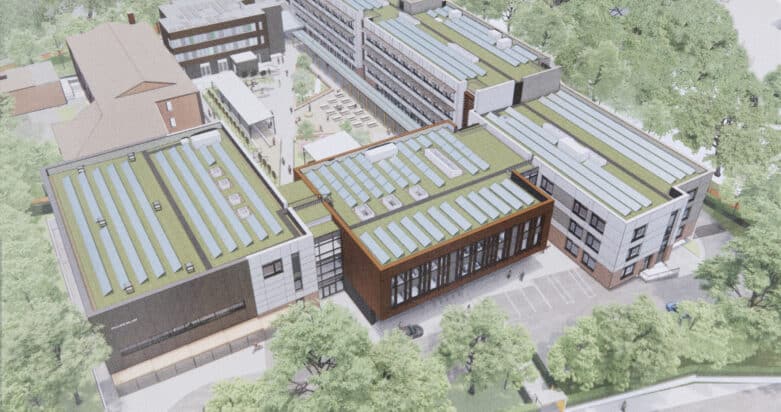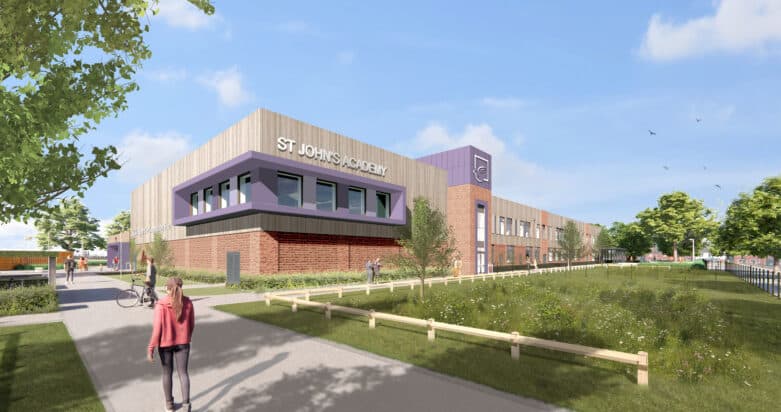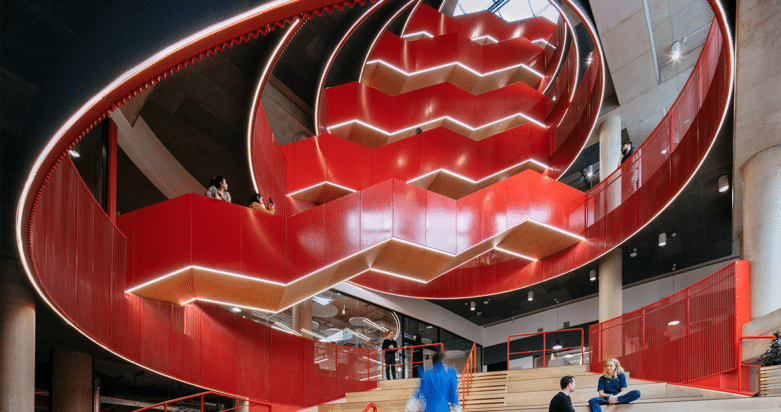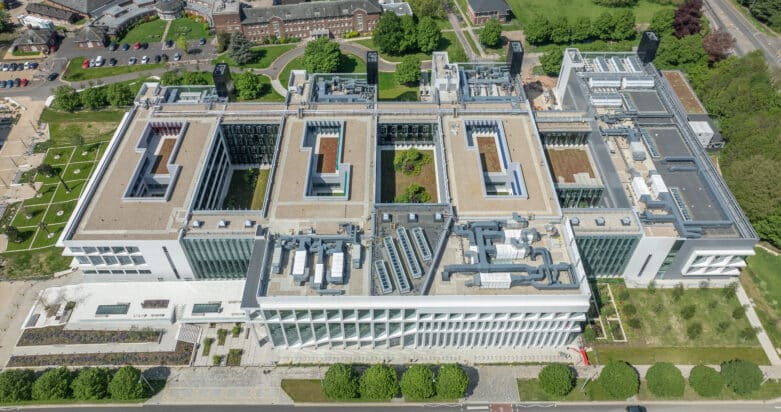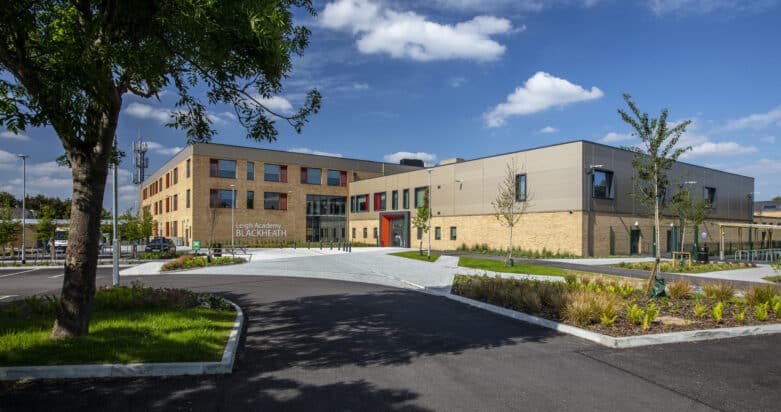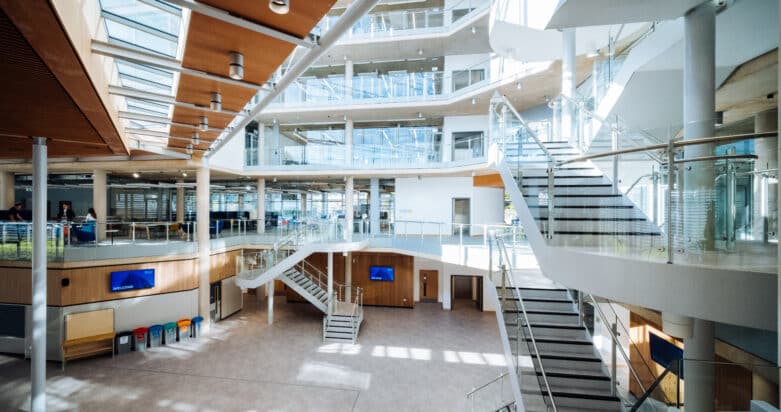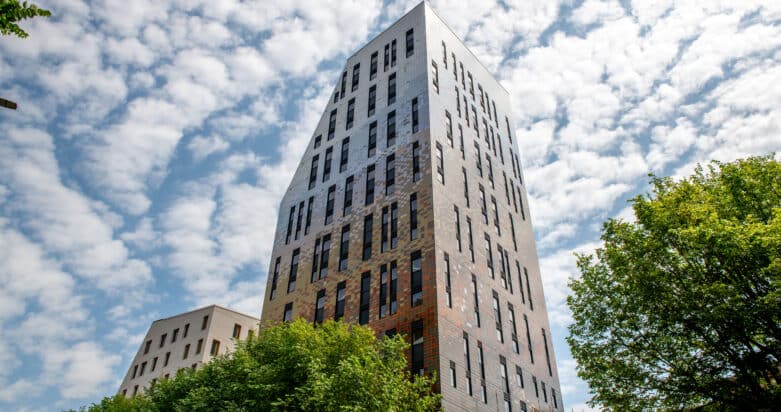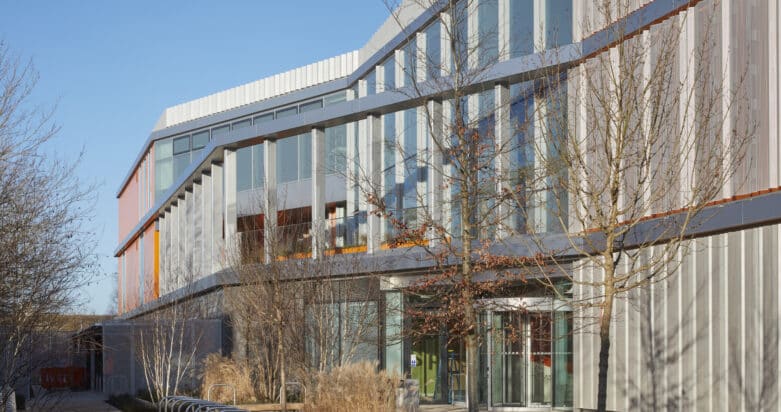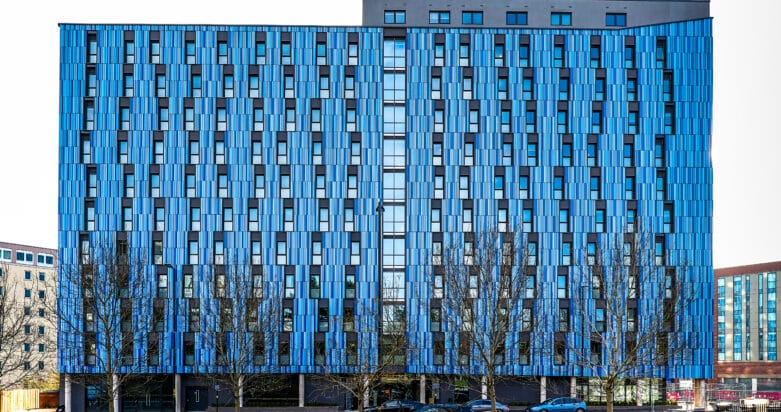Bouygues UK delivered Pencoedtre High School for the Vale of Glamorgan Council as part of the Welsh Government’s 21st century school’s investment programme.
It is fascinating to see how sustainable the new school is going to be with the solar panels on the roof. It is great to see that this is where I am going to sit my GCSEs and go on to sixth form.
Ellie Clark, Year 9 Student Ambassador
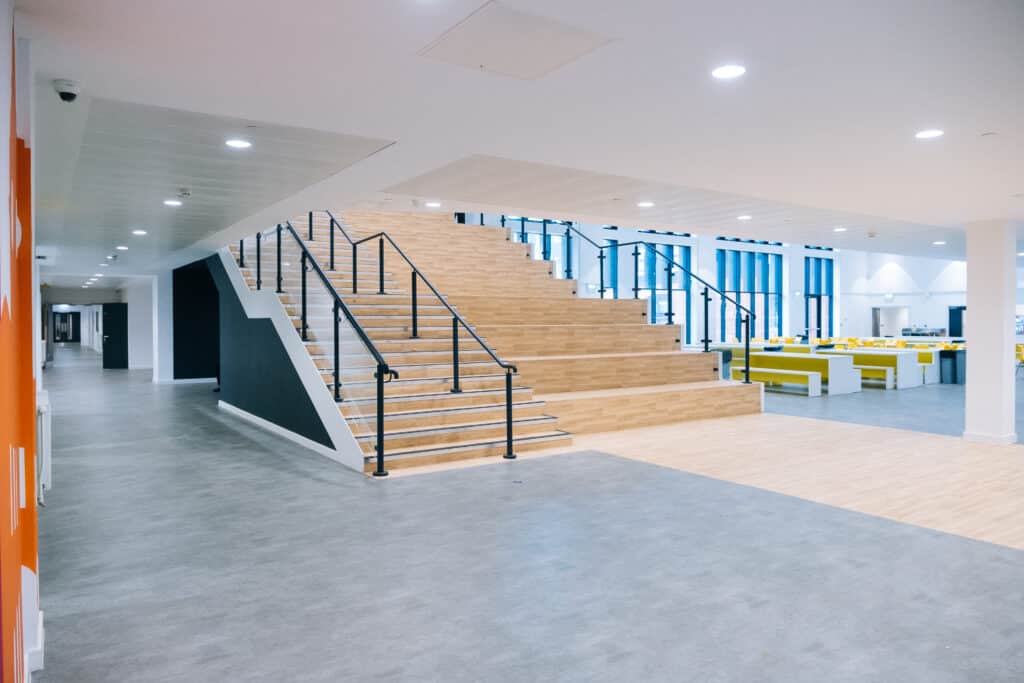
Pencoedtre High School is located on the grounds of Barry’s existing Brynhafren Comprehensive School. The first phase of works has delivered a new state-of-the-art 4-storey school for 1,200 pupils. Key features include expansive science labs, music studios and an open-plan dining area.
Our project team additionally re-sequenced works to deliver an all-weather sports pitch in Phase One, ensuring a better provision of the school’s external and physical curriculum during the project. This additionally freed up space from the Phase Two areas, allowing the client’s earlier sale of this land for development, benefiting their revenue streams.
Bouygues UK also delivered the second phase of works, demolishing the old school buildings, after the removal of asbestos. Now complete, the areas created provide additional on-site parking areas plus landscaping and sporting facilities that include a four-court sports hall, all-weather hockey pitch and grass rugby and football pitches.
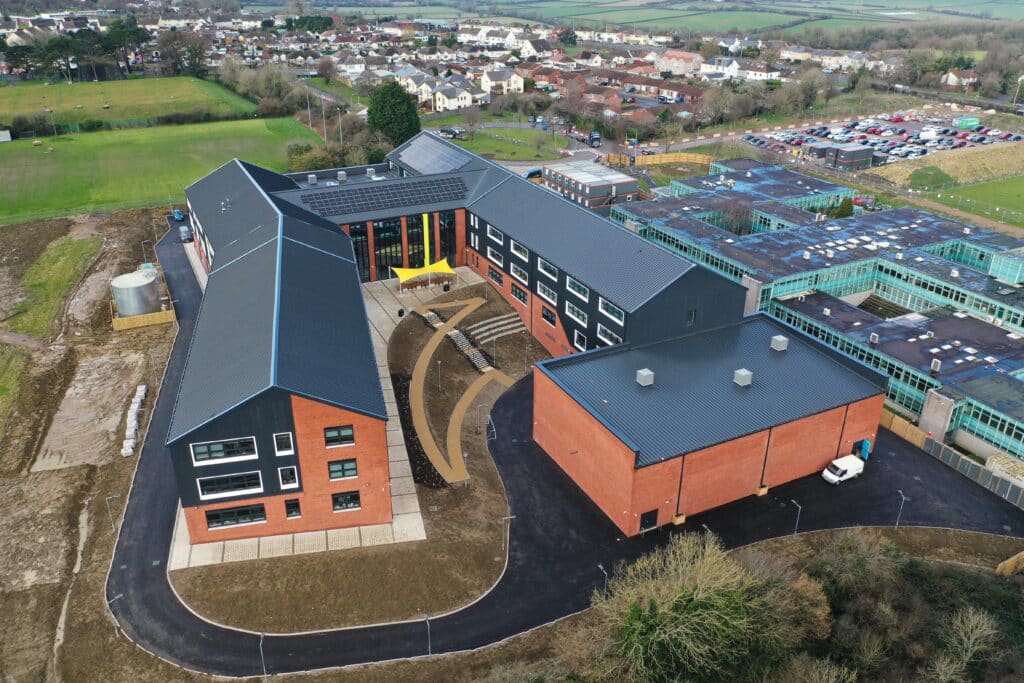
The new school’s external areas also provide performance spaces for creative pursuits like theatre and dance, for use by the school and community. Pupils can now additionally benefit from longer opening hours and an evening meal, as part of the Welsh Government’s extension to the school day pilot.
Even with stretching targets agreed for Social Value with Vale of Glamorgan, Bouygues UK over-performed against the requirement. Exceedances across local employment, local spending, provision of educational sessions and training opportunities created an aggregated performance score of 181.8% against agreed targets.
[Bouygues UK] has made the move a lot easier than we anticipated. Your patience has been outstanding, facing the demands you have been subjected to. Our staff are full of compliments and praise for your team. I look forward to getting together to celebrate the great efforts and this amazing building.
Kelly Williams Project Manager, Vale of Glamorgan
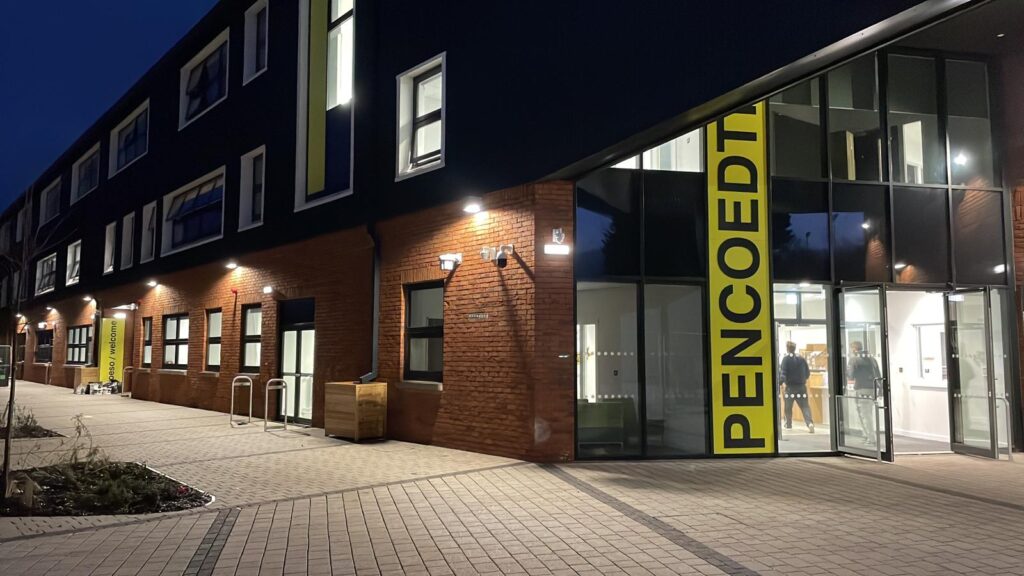
Sustainability
Bouygues UK placed strong emphasis on sustainability throughout the project. The building incorporated fabric first and passive design measures to reduce in-operation energy demand alongside careful selection of fabric materials and insulation products to meet targeted U-values and performance requirements. The operational building achieved the required ‘A’ EPC Rating and reported Energy Use Intensity (EUI) at 65kWh/m² per year in line with LETI recommendations.
Additionally, all blockwork, concrete, and sub-base materials from the demolished buildings were repurposed as sub-base for new car parks, multiuse games areas (MUGAs), and 3G Hockey Pitch.
Further initiatives included the use of highly efficient, low-energy site cabins and the distribution of 420 saplings to the local community to offset the project’s carbon footprint. Ecological benefits were also achieved through the creation of new natural habitats, including swales, an orchard, and native plantings, along with the provision of bird and bat bricks within the building structure to support local wildlife.
Challenges
The scheme’s most significant challenge became apparent in the first weeks of the project. On appointment, a detailed technical review was undertaken by our design team (HLM, Cambria, Hydrock) which highlighted a Welsh Water Major Asset (Pipe) running diagonally across the south of the site serving large elements of the Barry region from a local underground reservoir. The associated cost and the potential disruption made its diversion unviable. Our team therefore redesigned the building to avoid the water main whilst not compromising but enhancing the school’s appearance. Extensive engineering works were needed to form a 5m high concrete retaining wall. This sat centrally in the building, creating a 3-storey structure on the site’s higher levels and a 4-storey structure on its lower levels, forming an internal courtyard and utilising the natural topography of the site to create this tiered protected space.
The tight residential nature of the roads surrounding the site was immediately a concern to Bouygues UK. A primary target for us was to work closely with the local community and not create any disruption resultant from our works. We created on-site parking zones for operatives’ use and tightly controlled this, preventing on-street parking. Safe access for staff, students and visitors to the existing school were maintained with the bus drop-off zone and delivery routes kept clear throughout the project.
Effective stakeholder engagement was a key requirement for delivery in the live environment, where less than 10m separated the site footprint from the existing live school environment. Our project and site management teams maintained regular contact with the school leadership team to ensure construction activities commenced with
minimal disruption to school operations.
Excavation works were challenging due to the ground’s combination of dense clay and limestone cobbles. These required lengthy processing and we had to appoint an external specialist to oversee these earthworks.
Bouygues UK’s approach with both client and supply chain was collaborative from the beginning. The trust-based relationships we constructed reaped countless benefits.
We instigated weekly collaboration workshops with our partition/ceiling and MEP partners agreeing ways in which their works, normally carried out one after the other, could be achieved concurrently. This created a culture where people worked beyond their usual daily responsibilities, forming cross-team cooperation that helped us complete Phase One on time.
Community Benefits Achieved
Bouygues UK significantly exceeded the social value targets set by the Vale of Glamorgan, achieving an aggregated score of 181.8%. This performance was driven by local employment, spending, and the creation of educational sessions and training opportunities.
Five local residents were appointed as Community Ambassadors, liaising with neighbours and keeping them informed about project progress and potential disruptions. Regular newsletters, social media updates, and an official complaints log ensured transparent communication with the community. Student ambassadors were also appointed on the project.
In a joint initiative with Cardiff Blues Community Foundation, Bouygues UK launched the Tackle scheme. The eight-week course aims to engage pupils from years 8 to 10 initially, through workshops and practical sessions geared towards career aspirations and higher education avenues.
The project also supported local employment initiatives by aiding the establishment of the first scaffolding training centre in Wales. This centre enabled apprentices to gain practical experience and secure employment opportunities, thereby strengthening local supply chains.
